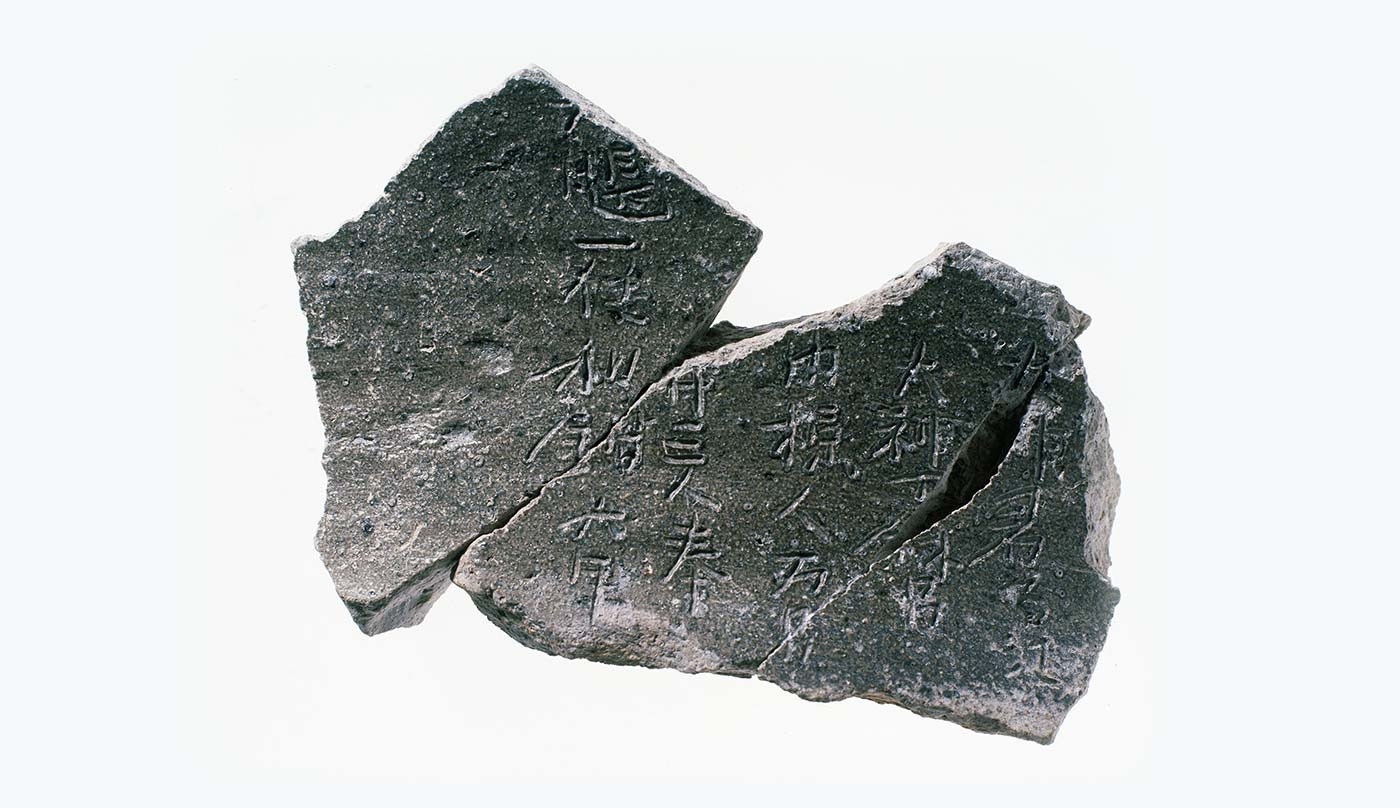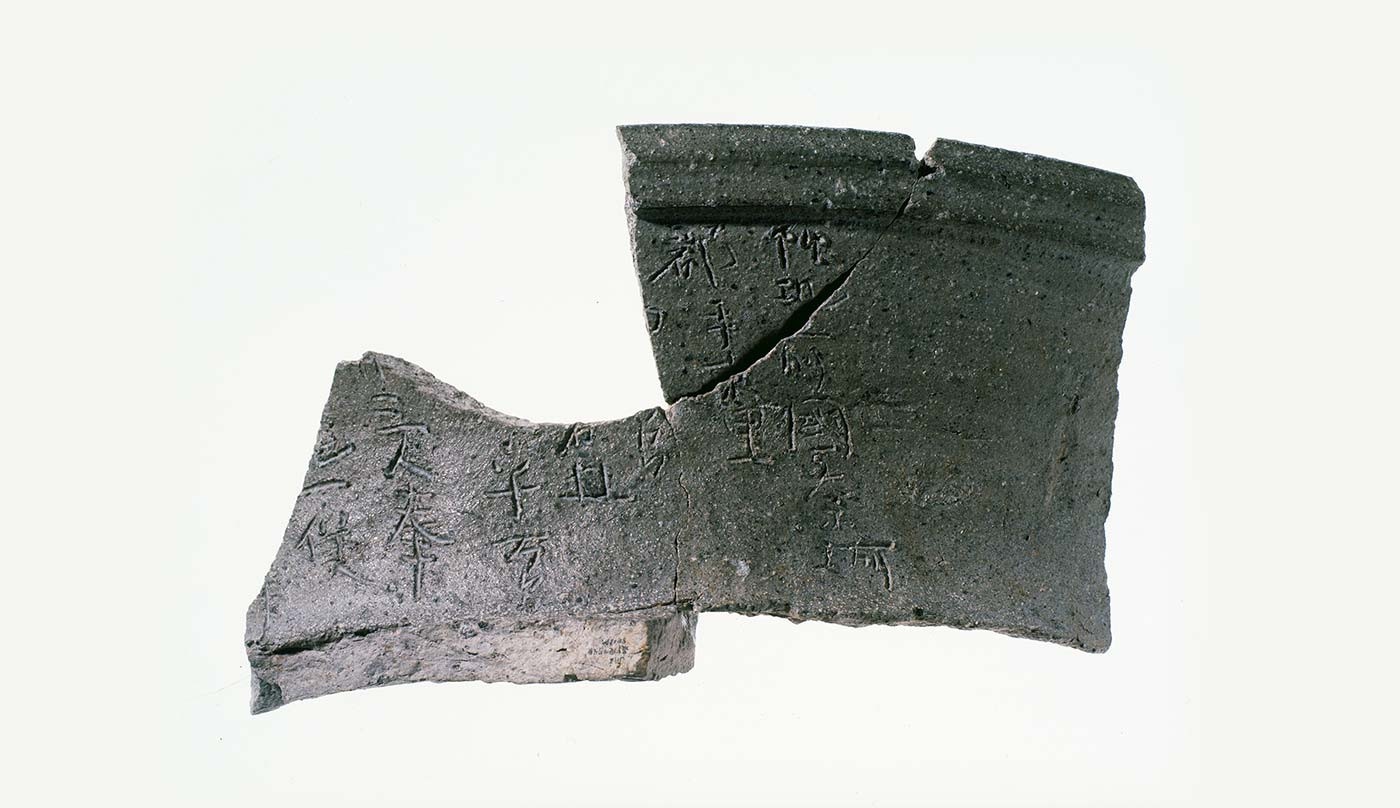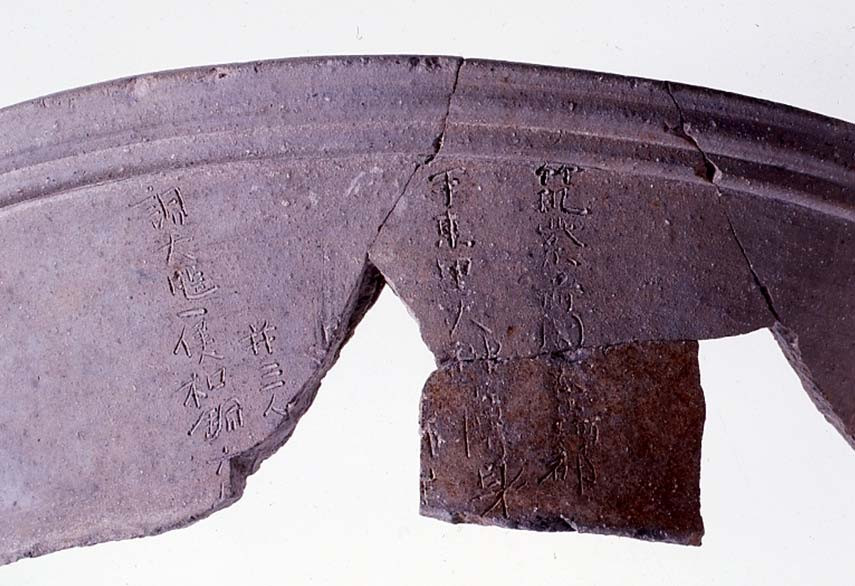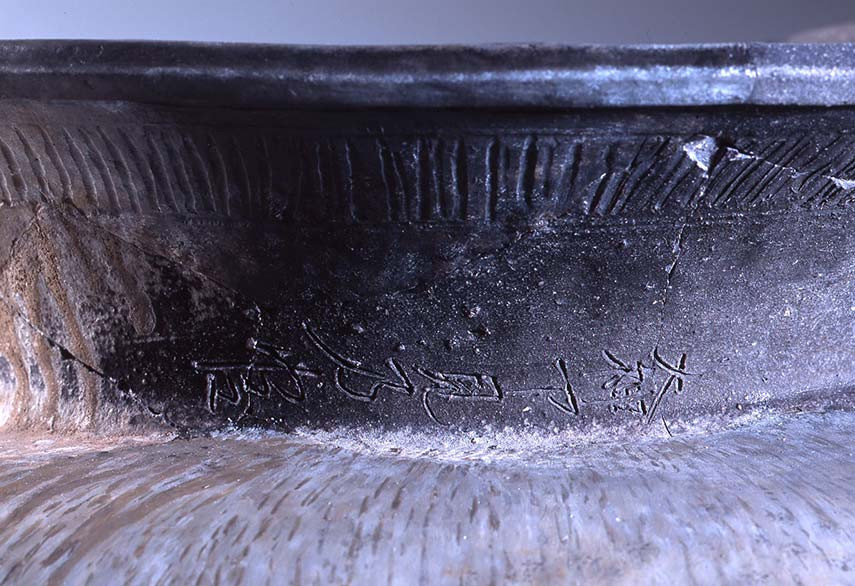
Engraved Sue-ware excavated from the Ushikubi Sue Ware Kiln Ruins
| Location | City of Onojo |
|---|---|
| Designation | Prefecturally Important Tangible Cultural Property(Artwork) |
| Emblem | 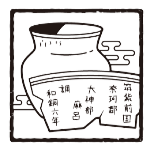 |
Excavated from the Ushikubi Sue Ware Kiln Ruins are many earthenware vessel fragments engraved with “714 AD” and “Cho”.
In the Engishiki (a book on laws and customs) written in the first half of the 10th century, large and small earthenware vessels were recorded as tax called “Cho” items governed by Chikuzen Province, and these Sue-ware engraved fragments with the character for “adjustment” show that these kilns supported not only the “Western Capital” but “Heijo-kyo” (ancient Nara) as well.
History Told Through Pottery Engravings
The engraved Sue-ware pottery excavated from Ushikubi Sue-Ware Kiln Ruins include some that are engraved with characters for tax purposes, showing that the Ritsuryo System (ancient legal system in Japan) had spread to the provinces. Some of the Sue-ware pottery is engraved with personal names, which are thought to be the workers who made them, including Omiwabe no Minokan in the 7th century and Omiwabe no Momoe, Omiwabe no Tokushin, Omiwabe no Maro, Omiwabe __, Uchikuranohito no Maro, and Oshisaka __ in the 8th century. In this way, engraved Sue-ware pottery serves as an extremely precious historical resource contain information that often gets lost in provincial areas, such as the names of the workers and how the Ritsuryo System was enforced at the time.
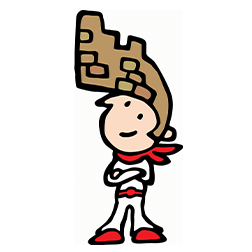
Onojo City Characters/Ono Joe
From the names engraved on the Sue-ware pottery, we know that Omiwabe and Oshisaka are names of ancient clans. Both originate from powerful clans in Nara Prefecture at that time. Meanwhile, “Uchikuranohito” is thought to be from a clan that migrated from overseas, meaning Ushikubi Sue-Ware Kiln Ruins were once international kilns where workers from different places would make Sue ware.
Access Information
Address
Onojo Cocoro-no-Furusato-Kan City Museum:816-0934 3-8-3 Akebonomachi, Onojo, Fukuoka
By Train
About 12 min on foot from Nishitetsu Kasugabaru Station
By Car
About 6 min from the Dazaifu IC on the Kyushu Expressway

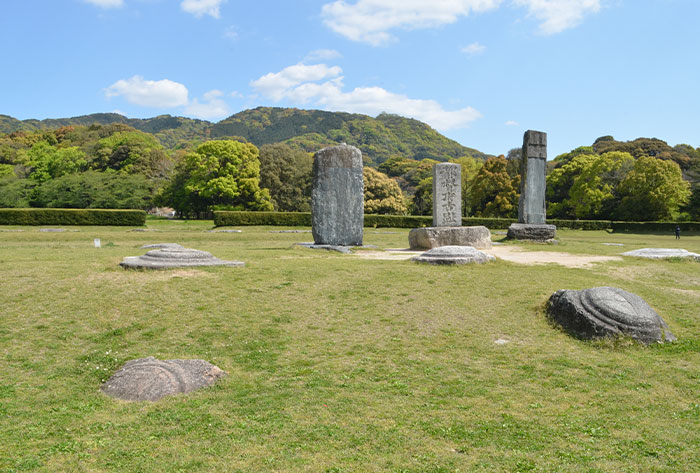
About the Western Capital
The “Western Capital”, created in Tsukushi 1300 years ago. Cultural assets speaking to the magnificence of this city of international exchange that flourished in East Asia are scattered across the cities of Chikushino, Kasuga, Onojo, Dazaifu, Nakagawa, and Umi in Fukuoka Prefecture as well as the town of Kiyama in Saga Prefecture.

